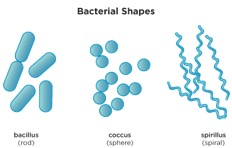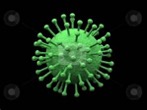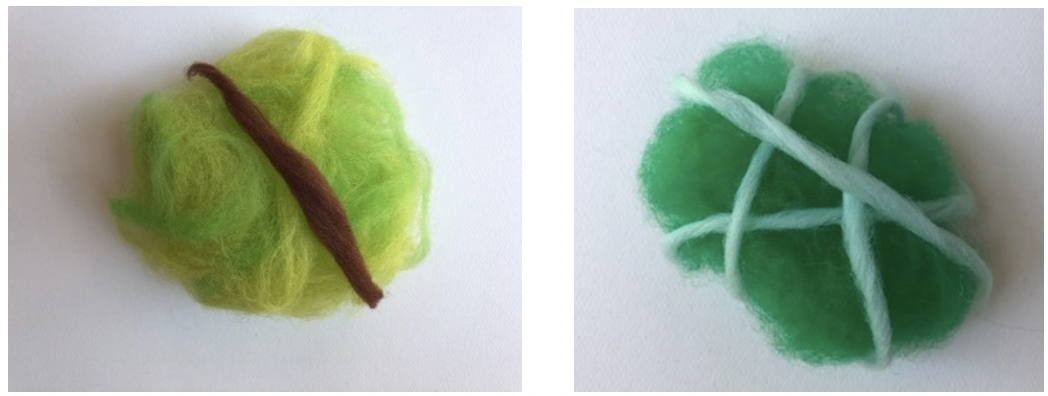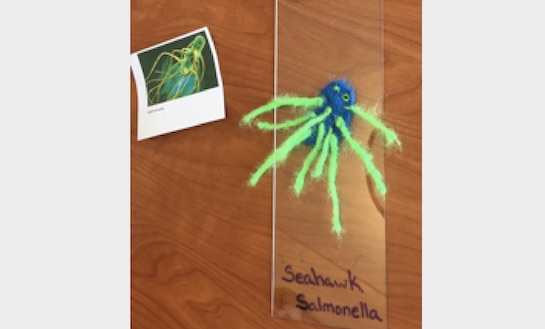Students will learn about the shapes of germs/bacteria and how to wet felt with wool to create “germs” and display them on a microscope “slide.” Recommended for 1st Graders.
Shape: A flat figure created within joined lines.
Proportion: Refers to the relative size of parts of a whole (elements within an object). We often think of proportions in terms of size relationships within the human body.
Scale: Scale is the size of an object as it relates to its usual physical size.
Bacteria: single celled microorganisms.
Binomial Nomenclature: system of naming in which two terms are used to denote a species of living organism.
Felting: becoming permanently matted or entangled.
Friction: the resistance that one surface encounters when moving over another.
Sculpture: a three-dimensional form created by an artist.
Slide: a small flat rectangular piece of glass on which specimens can be put to look at under a microscope.
Textile: a type of cloth or woven fabric.
Wool: the fine, soft curly or wavy hair forming the coat of a sheep, goat, or similar animal which is used to make yarn and cloth.
Wool Scales: the overlapping layers of wool at the microscopic level which open up when warm and wet and stick together very tightly.
Textiles can refer to anything made of a soft, flexible material. Humans have been making textiles from available materials for over 30,000 years. Textiles have been felted, spun, netted, looped, knotted, pressed, knit, crocheted or woven to create cloth which then is made into baskets, blankets, rugs, clothing, homes, decorations, storage and tools. Learn more about the history of textiles in art on the Issaquah Schools Foundation Textiles Reference Page.
Lesson will enrich science germ/bacteria curriculum.

Examples of real germs below, as seen under a microscope. From left to right: Cold Virus (round), Gingivitis/Bad Breath (rod), and C. Coli/Diarrhea (spiral).



This is a wet process. So, work in an area where getting the floor wet won’t be a problem.
Purchase acrylic sheet at hardware store and have a store employee cut it into 4”x12” rectangles. This will be the “slide” for the felted germs. At most hardware stores, employees will cut acrylic at no additional cost. Another option is to go to Tap Plastics in Bellevue, they will save scraps for you with advanced notice. If these options don’t work out then you can always just use clear round plastic plates and display the student’s “germs” on the plates like petri dishes.
Show image of wool under microscope and show the “scales” that stick together when felting.
Check out the book Germs! Germs! Germs! by Bobbie Katz from the library.
What do you know about germs?
What are the shapes of germs?
Where did this amazing bag of brightly colored wool come from?
Can the students say?
- I can name the different germ shapes.
- I can create my own germ “slide” by using the felting technique. I can create wool germ sculptures and attach it to the slides.
- I can label my germ sculptures using Binomial Nomenclature.







Lesson by Elizabeth Jackson. Book: Germs! Germs! Germs! By Bobbie Katz
21st Century Thinking Skills
Observing, cause and effect, creating.
Students will compare and contrast the different shapes and sizes of the germ specimens.
Students will use visual observation, visualization and decision-making skills by observing germs and then creating their own representational germs made from the wool felting technique.
WA State Learning Standards
(VA:Cr1.1.1) a. Engage collaboratively in exploration and imaginative play with materials.
(VA:Cr1.1.4) Brainstorm multiple approaches to a creative art or design problem.
(VA:Cr1.2.1) a. Use observation and investigation in preparation for making a work of art
(VA:Cr1.2.4) a. Collaboratively set goals and create artwork that is meaningful and has purpose to the makers.
(VA:Cr2.1.1) a. Explore uses of materials and tools to create works of art or design.
(VA:Cr2.2.1) a. Demonstrate safe and proper procedures for using materials, tools, and equipment while making art.
(VA:Cr3.1.1) a. Use art vocabulary to describe choices while creating art.
(VA:Pr5.1.1) a. Ask and answer questions such as where, when, why, and how artwork should be prepared for presentation or preservation.
(VA:Re7.2.1) a. Compare images that represent the same subject.
Arts Integrations Opportunities
Science, Health. This lesson directly connects to science curriculum. Students will learn about microscopes, scientific observation, and germ shapes. The teacher can teach more in-depth understanding of germs, where they come from and how they work as it relates to heath and the biology.
Please note: These lesson plans are intended for non-profit use only. Use of these plans for commercial purposes should give attribution to the Issaquah Schools Foundation and be accompanied by a nominal donation at www.isfdn.org/donate. Thank you.
Fueling Success for Every Student, Every School